Review round-up: mid-priced seven-string electric guitars
Journey deeper into the extended range universe with Jackson, Charvel, Schecter and Ernie Ball Music Man
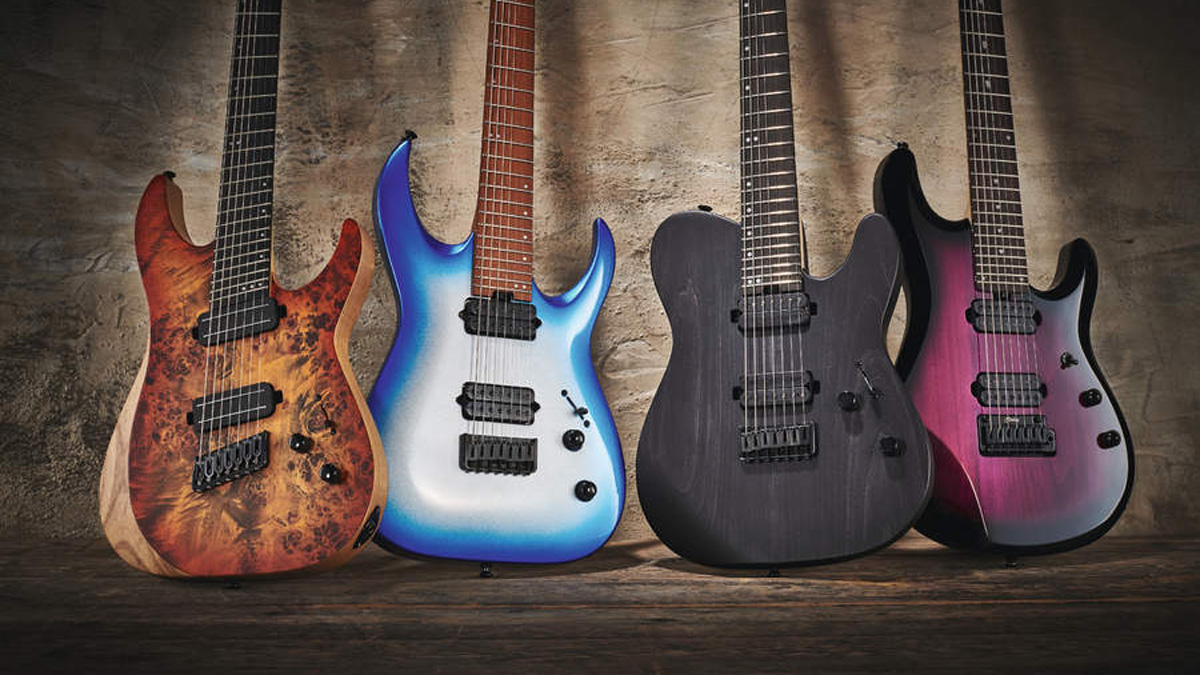
The consumerist maxim that says ‘you get what you pay for’ could have been written for 7-string guitars.
That’s no slight on the playability and sound of entry-level models built for beginners and those curious about adding a string to their game who want a chance to adjust to the new dimensions of fretboard and scale. No. It’s that these four electrics from Jackson, Sterling By Music Man, Schecter and Charvel demonstrate that when we get a little more serious financially, we are rewarded with an instrument to unlock the seven-string’s potential.
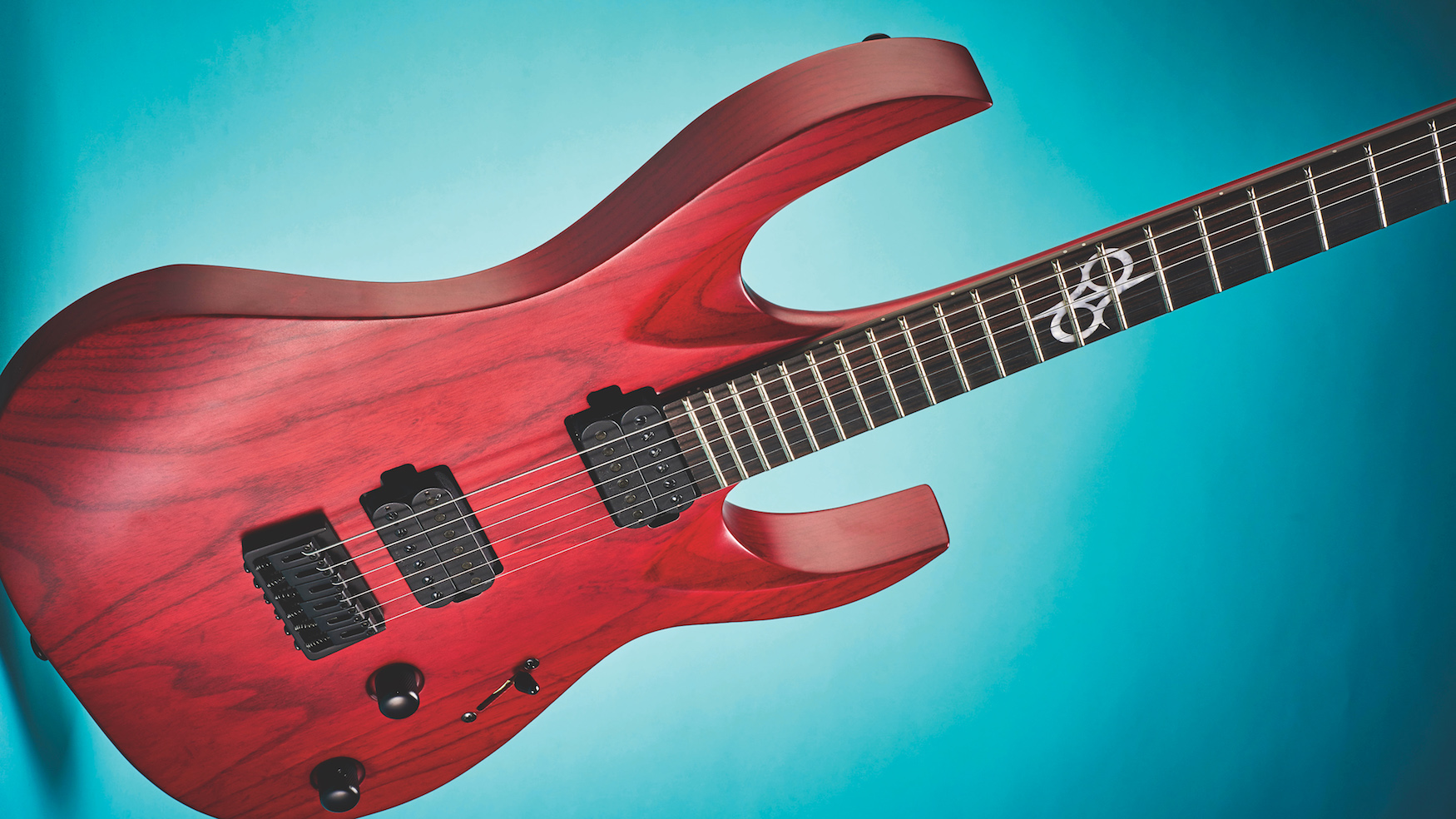
Among them are two signature models from Dream Theater’s John Petrucci and Periphery’s Misha Mansoor. Petrucci’s Sterling By Music Man JP70 and Mansoor’s Jackson Pro Series Juggernaut HT7 are more affordable, mass-produced versions of their USA custom guitars.
Then we have Schecter’s Reaper-7 Multiscale, which looks to perfect intonation and playability on an S-style seven- string. Its finish is so bold the fanned frets might be the second thing you notice.
Finally, there’s the Charvel San Dimas Style 2-7, a big lump of ash with a Telecaster headstock. It’s a Frankenstein shred machine. But with high-output pickups and nuclear low-end as standard, you could argue there’s a monster hiding in each of these.
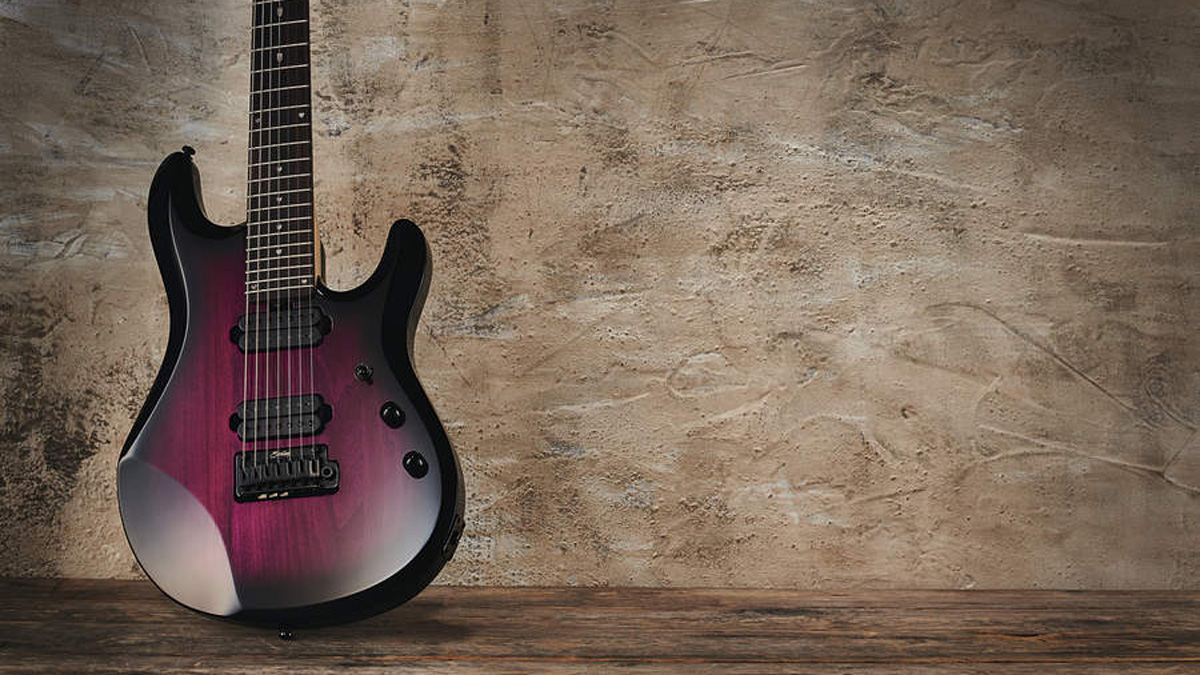
Sterling by Music Man JP70 John Petrucci Signature
If that’s a floating vibrato, where’s the locking nut?
There isn’t one. But worry not. The JP70 comes fitted with a set of locking tuners and it is pretty darn solid when it comes to holding its tune, even with a bit of whammy abuse. Okay, some might prefer a double-locking Floyd Rose style setup but no one is going to miss the fiddling with an Allen key before rehearsal.
How close is this to Petrucci’s JP7 Music Man signature?
The basswood body is the same profile, finish options are similar, and you’ve even got the Petrucci signature ‘Shield’ logo at the first fret. What you would be paying the extra two-and-half grand for is a set of DiMarzio pickups and better tuners. Oh, and a Piezo pickup installed within the floating vibrato.
Does the body contouring make a difference?
Absolutely. It makes the JP70 one of the most comfortable S-style electrics we have played. And don’t anyone go knocking basswood on a shred guitar. If it’s okay by Satriani and Petrucci, it’s okay by us.
At a glance
Key features: Basswood body, maple neck (bolt-on), 25.5" scale, 24 jumbo frets, rosewood fretboard w/JP Shield Logo, 2x Sterling By Music Man humbuckers, 1x volume control, 1x tone, three-way pickup selector, locking die-cast tuners, floating Sterling vibrato, gig bag included
Finish: Trans Purple Burst [reviewed], Trans Green Burst, Mystic Dream
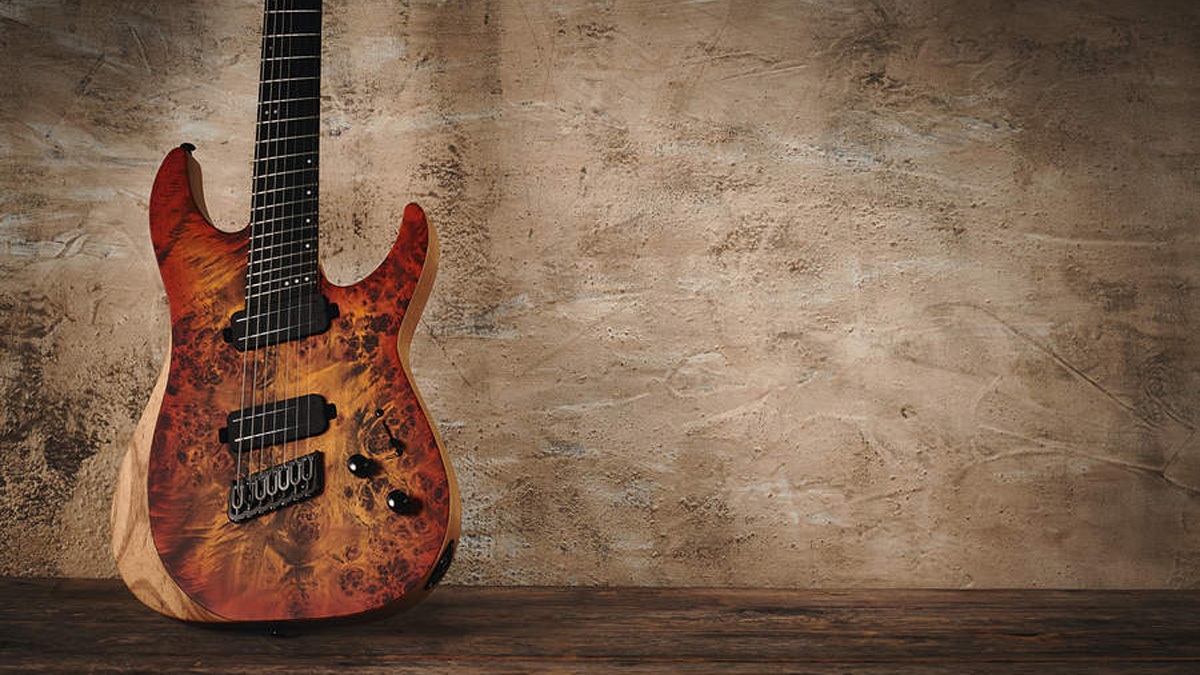
Schecter Reaper-7 Multiscale
That finish is crazy. What is it?
It is poplar burl in what Schecter calls Satin Inferno Burst. We are starting to see more poplar burl veneers on shred electrics. It makes for a cheaper and more anarchic alternative to the quilted or flame maple veneers we might find on a guitar this price.
Why would I want a multiscale guitar?
Because it is built with dead-on intonation, consistent string tension and playability in mind. The scale length, which we measure by taking the distance from the nut to the middle of the twelfth fret then doubling it, is 27" on the seventh string, and is tapered accordingly so it sits at a more conventional 25.5" on the first. It also helps maintain tension across the neck.
What’s the neck like?
It is what Schecter calls ultra-thin, cut in a fairly flat and shred- friendly C-shape, and with its maple and walnut ply, and carbon fibre rods reinforcing it, the Reaper-7 is built to withstand all kinds of abuse. The 20" radius offers it a similar profile to the Mansoor Juggernaut.
At a glance
Key features: Swamp ash body w/ poplar burl top, maple and walnut multi-ply neck w/ carbon fibre reinforcement (set), 25.5"-27" scale, 24 narrow x-jumbo frets, ebony fretboard, 2x Schecter Diamond Decimator humbuckers, 1x volume control, 1x tone w/ push-pull, three-way pickup selector, Hipshot bridge
Finish: Satin Inferno Burst [reviewed], Satin Sky Burst, Satin Charcoal Burst
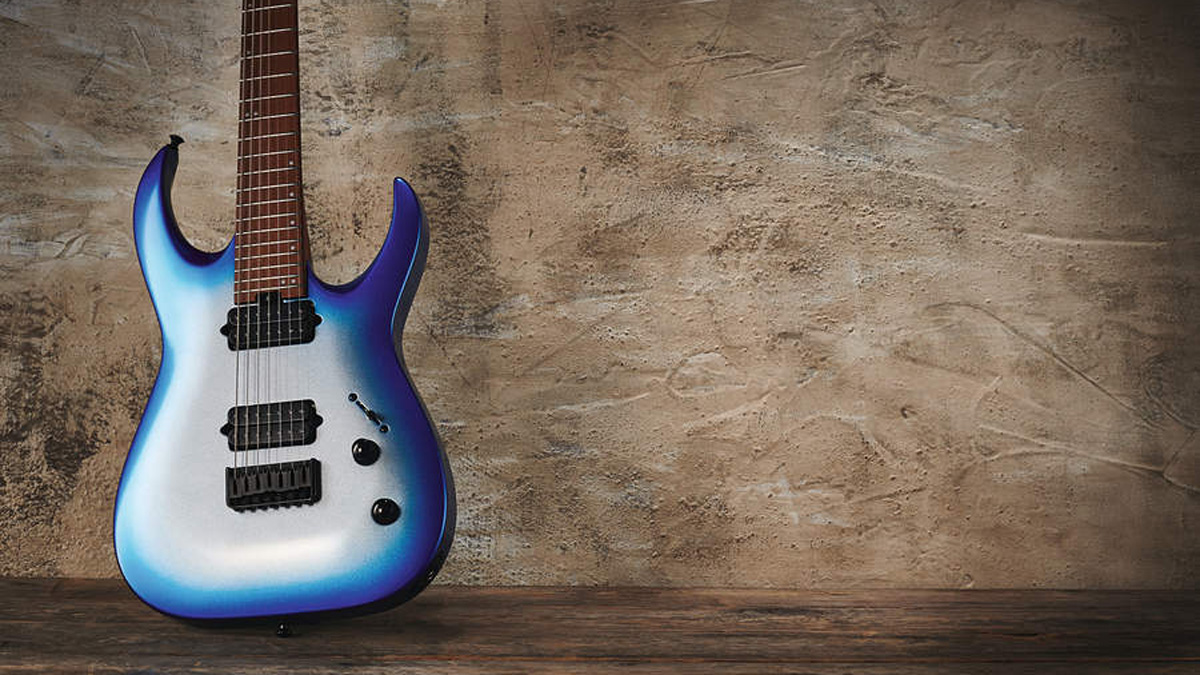
Jackson Pro Series Signature Misha Mansoor Juggernaut HT7
The neck and fretboard are caramelised maple. Is this edible?
Caramelised, or roasted, maple is treated with heat to take out much of the moisture, making for a harder and brighter-sounding piece of maple, which makes sense when you’ve got an extended range guitar that might have its seventh string tuned to A#.
Does the 20" neck radius make a difference?
This 2019 update to Mansoor’s Pro Series brings it in line with his USA model and it’s going to be a winner for shredders who enjoy a wider, flatter fingerboard to navigate. The fingerboard’s rolled edges and nice, fat jumbo frets add to the Juggernaut’s incredible playability. This is a guitar that’s built for you to play the impossible.
The fret markers glow in the dark, don’t they?
They do. It’s a nice, functional touch. Another subtle but invaluable feature is the truss rod adjustment wheel, easily accessible above the neck humbucker. This makes for quick and easy adjustments to the neck that a seven-string guitar will need on occasion.
At a glance
Key features: Basswood body, roasted maple neck, 26.5" scale, roasted maple fretboard, 24 jumbo frets, 2x Jackson Uncovered MM1 humbuckers, 1x volume, 1x tone w/push-pull select switch, five-way pickup selector, locking die-cast tuners, Jackson HT-7 bridge
Finish: Blue Sky Burst [reviewed], Neon Orange
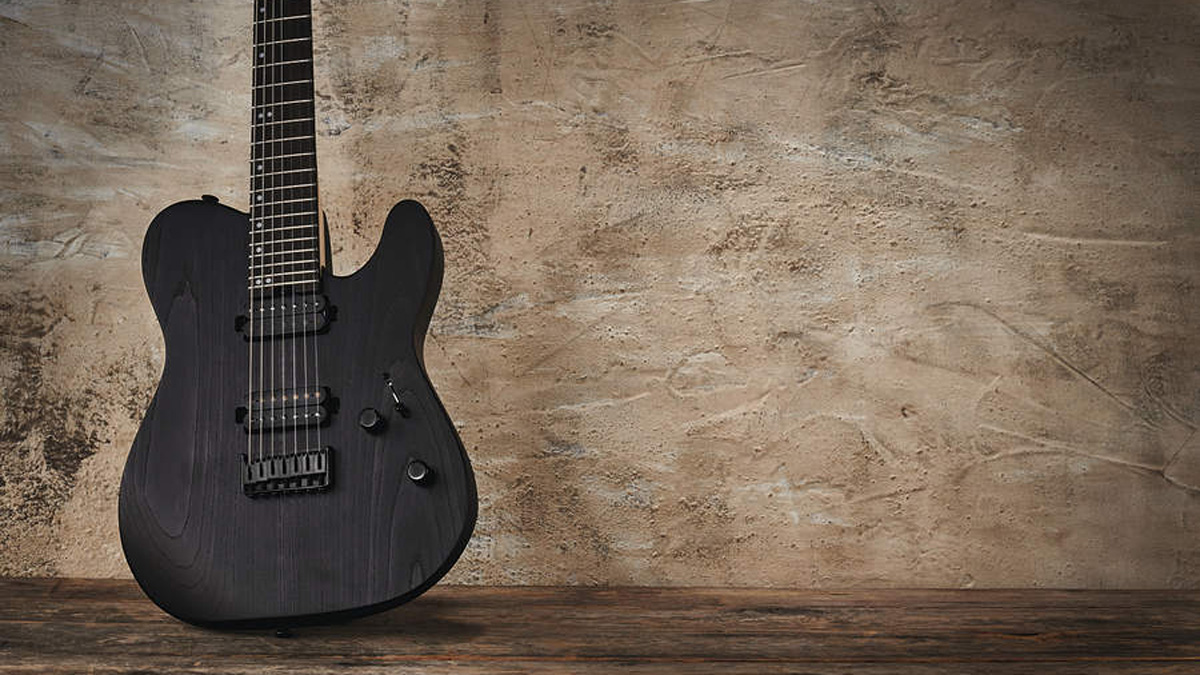
Charvel Pro-Mod San Dimas Style 2-7
Tell us more about these pickups...
They are both high-output humbuckers, wound for extended range guitars with metal players in mind. We’ve got a Seymour Duncan Nazgûl in the bridge and a Seymour Duncan Sentient in the neck. With its big ceramic magnet, Nazgûl runs a little hotter, with bright mids and highs. The Sentient is a little more sober, more classic rock.
What’s a no-load tone control and why should I want one?
We predict that the no-load tone control and variants thereof are going to be hidden features on the guitars of the next couple of years. It’s simple. From positions 0 through 9 the tone pot works as normal, but on 10 it takes itself out of the guitars circuit so you are running straight from the pickup to the amp. With less resistance, your signal should be hotter and brighter.
Is that really a Telecaster headstock?
It sure is. Charvel was the pioneer of the hot-rodded electric throughout the 80s. This showcases the classical lineage of a guitar that’s nonetheless built for the future of now.
At a glance
Key features: Ash body, maple neck (bolt-on), 24 jumbo frets, ebony fretboard, 25.5" scale, 1x Seymour Duncan Sentient humbucker (neck) and 1x Seymour Duncan Nazgul humbucker (bridge), 1x volume w/ coil-tap, 1x no load tone, Charvel HT-7 bridge
Finish: Charcoal Gray [reviewed]
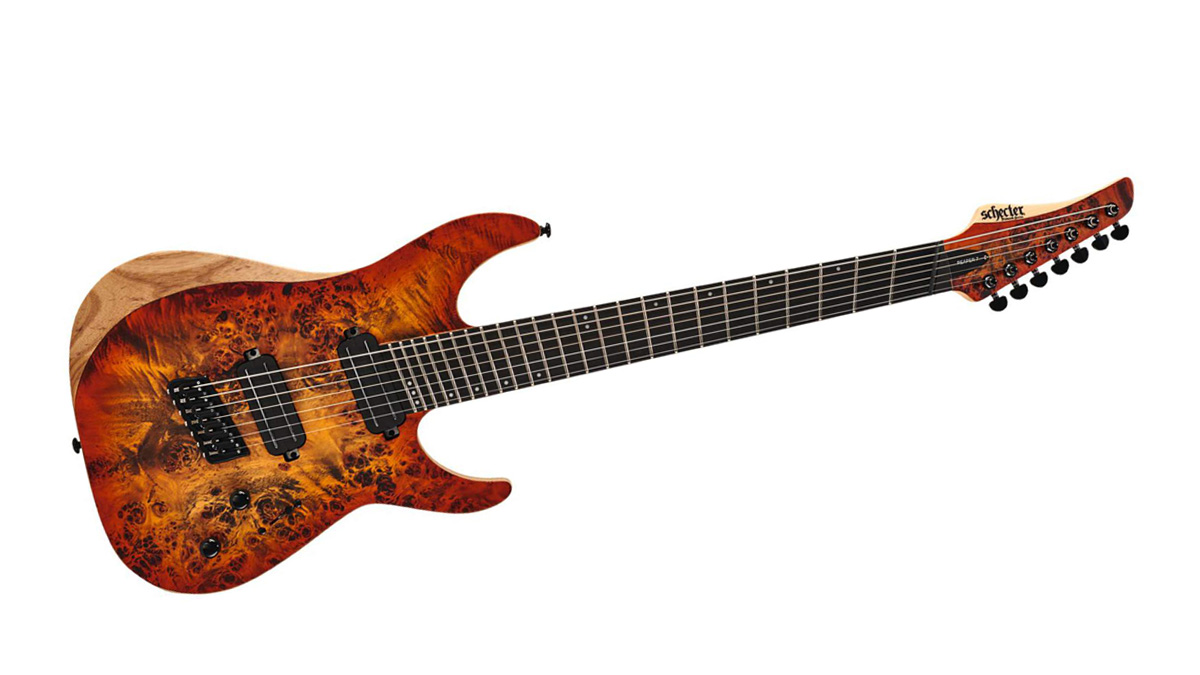
Head to head
Only the JP70 lacks some switchable gizmo on the tone pot, so we’ve got two humbuckers, switchable through three positions just as, say, a Les Paul does.
It’s no one-trick pony - indeed the cleans are warm and chimy - but it nonetheless encourages high-gain exertions above all else. We love the middle position with both humbuckers engaged, the tone thick and wide without turning to mud.
The Schecter’s sonics are at the other end of the spectrum, albeit that spectrum is bridged by a capacity to turn nasty on command. The tone pot is a push-pull coil-tap that lets you tease some glassy, elastic cleans from the otherwise feral Schecter Decimator humbuckers.
In such clean contexts, the seventh string - so often mined for low-end grunt by metal players - offers a de facto bass counterpoint, ripe with funk potential for fusion players, or those just looking to take their playing somewhere else.
It’s not by accident that basswood and ash are the tonewood choices here. Both are bright enough to assist the pickups in getting as much life out of that low seventh string.
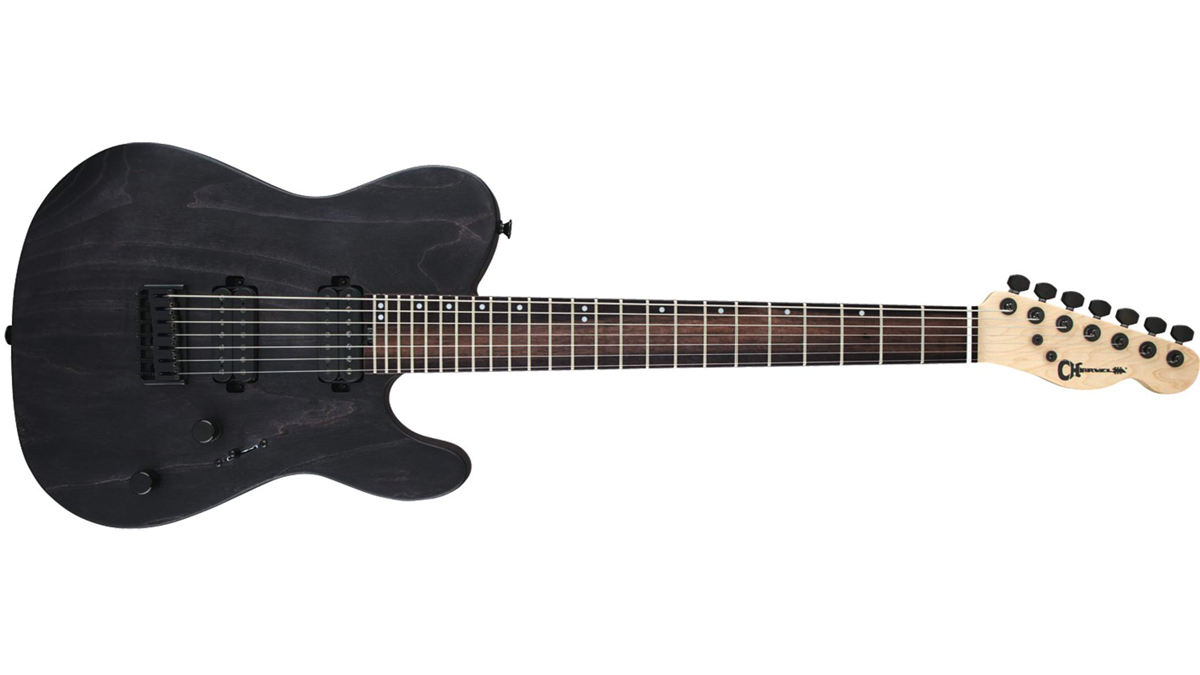
The definition across all of these guitars is remarkable. And there sure is a defined sense of purpose to the San Dimas. Its speedy neck has a similar feel to the Mansoor’s Jackson, but there’s a more high-output crunch to its pickups.
The no-load tone pot brings out a harmonic vocality to its tone, not unlike the Juggernaut’s, with its push-pull tone pot performing a similar function.
With the Juggernaut, the push-pull tone, allied to a roasted maple neck and fretboard, offers an abundance of trebly presence, while the capability for low-end powerchord muscle-work remains undiminished.
The San Dimas remains the shredder’s choice, yet its traditionally clunky heel is no match for the likes of Schecter’s immaculate set-neck joint, nor the unobtrusive designs on its Jackson and Sterling counterparts.
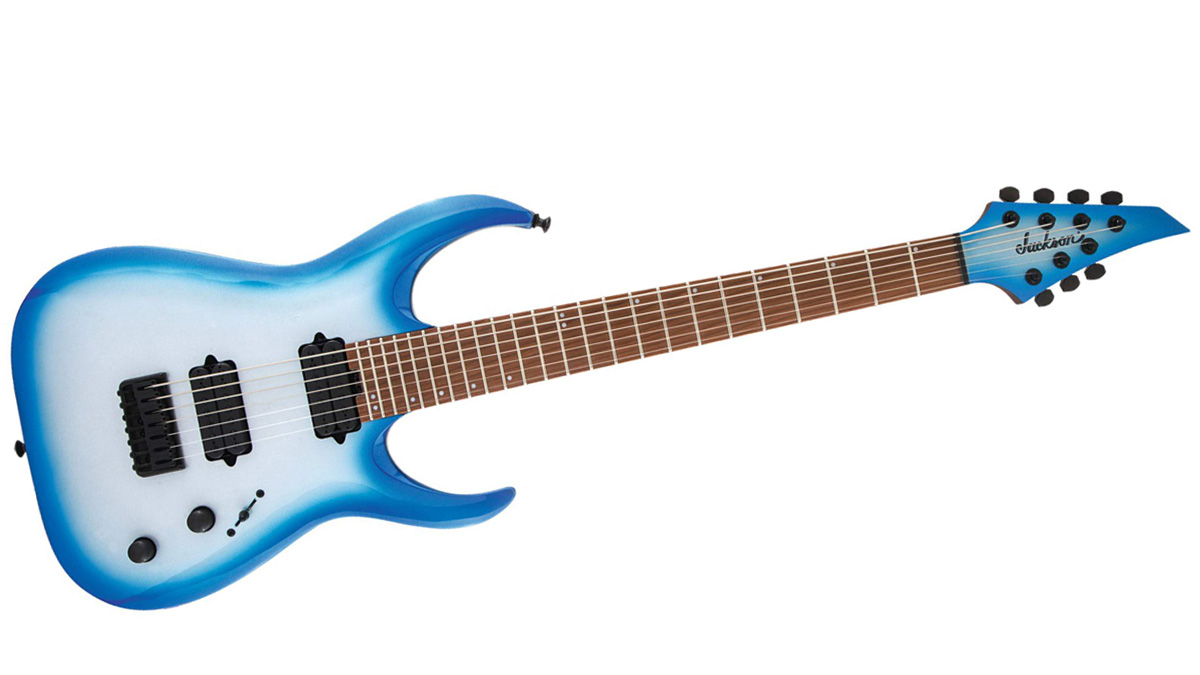
Final verdict
All of these seven-strings pass the acid test; there’s zero flab in the low seventh string.
This is crucial, and it’s a testament to how well these guitars have been constructed that in each the definition and string tension is nigh-on perfect. There’s a versatility to each instrument that makes it suitable for other styles. And all are really fun to play, with slim profile necks making light work of notey solos and rhythms, and just enough maple to grab onto for chord work.
The JP70, with that body contour on the wing, could not be more comfortable, unless it got someone else to play it for you. That person, the JP70 suggests, would be John Petrucci, and so the question remains whether those indifferent to Dream Theater would find the instrument too-much-Petrucci for their purposes. We say the vibrato might silence such doubts.
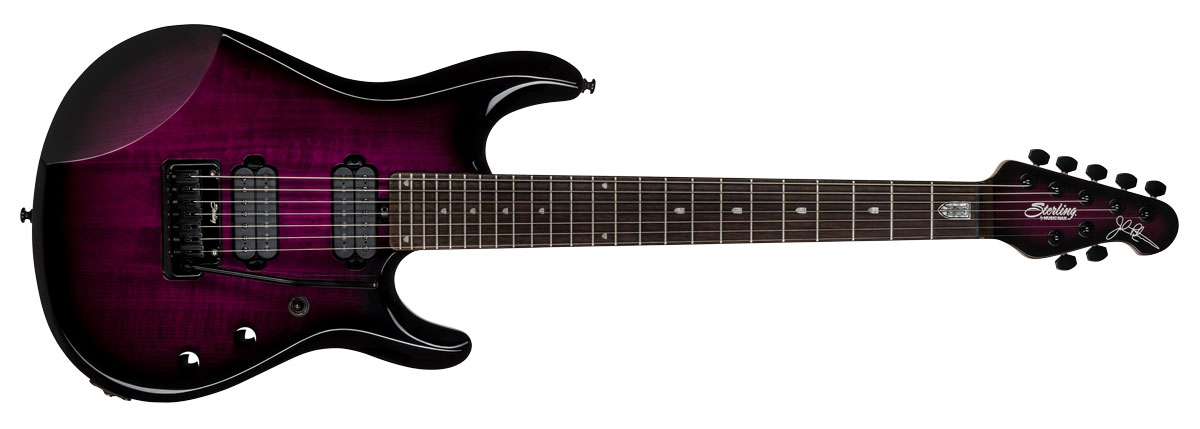
Certainly, all the others invite you to put your own stamp on the guitar. The Mansoor, a signature model in name only, lacks the big name Seymour Duncan pickups of the San Dimas but those MM1 humbuckers are remarkably versatile, and the playability and aggressive contouring are a vision of where the S-style electric is at in 2019.
That the Charvel hot-rodded feel translates to seven strings should be no surprise, but its shred-worthy gnarliness is nonetheless breathtaking. As for the Schecter, its multiscale design looks unusual but feels natural on a guitar blessed with a custom shop je ne sais quoi.
Best for metal: Sterling JP70 John Petrucci Signature
4.5 out of 5
Best all-rounder: Schecter Reaper-7 Multiscale
4.5 out of 5
Best value: Jackson Pro Series Signature Misha Mansoor Juggernaut HT7
5 out of 5
Best for shred: Charvel Pro-Mod San Dimas Style 2-7
4.5 out of 5
Jonathan Horsley has been writing about guitars and guitar culture since 2005, playing them since 1990, and regularly contributes to MusicRadar, Total Guitar and Guitar World. He uses Jazz III nylon picks, 10s during the week, 9s at the weekend, and shamefully still struggles with rhythm figure one of Van Halen’s Panama.


